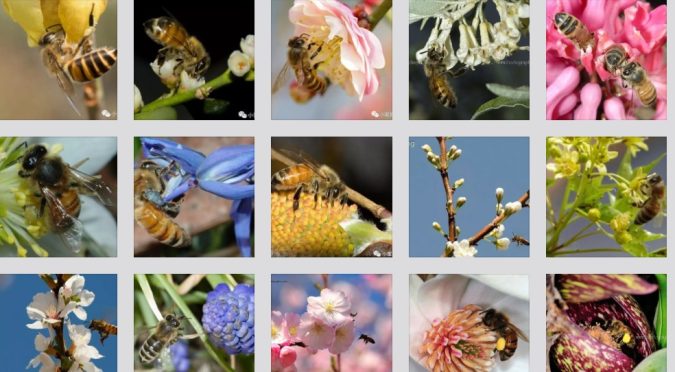June 21. I saw both yellow and white sweet clovers blooming along highways today. It is likely they have been blooming for 1-2 weeks. Some species of basswood (Tillia spp) are already blooming.
June 13. I saw Catalpa blooming yesterday. Beautiful flowers, and a good nectar source for honey bees. IT also has extrafloral nectaries to attract ants, which protect the plant from caterpillars.I have uploaded some old photos here, taken in 2004 and some even earlier using a Coolpix 990.
June 5. I thought I saw bird’s foot trefoil blooming today. Yellow flowers, bees love them. In the bean family (Fabaceae). It will bloom most of the summer. There are nice patches along Mount Hope road between Farm Lane and Hagadorn in East Lansing. I need to take a photo of them!
June 2. I was trying to find black locust trees on my way home last night and saw tulip poplar trees also blooming! Another excellent honey plant. White Dutch clovers are blooming on my lawn, right after I mowed my lawn last week. I did not mow this last weekend, will wait for the flowers to be fully used by insects first.
May 28. Smoke bush is blooming near the bee building. Covered with bees last year when I went there and did some photos.
May 25. Black locust is blooming. This is a wonderful and very important honey plant in Michigan. Another reason to get your package bees installed in April, not in May, to take better advantage of this plant. This year, however, has been cold and raining and our bees have not been build up as strong as I would liked — they should be having swarming cells now usually. No swarm calls so far this year, yet.
May 23. Blueberry is blooming, as mentioned by Rufus Isaacs on facebook. I have a photo as a cover on ABJ also.
May 17. Autumn olive (Elaeagnus umbellata, Elaeagnaceae) is blooming. Bees love it, but I was told the honey might be dark.I had a cover photo on American Bee Journal with a honey bee on this flower.
May 13. Red buds are in full bloom, i saw many bees foraging on an Asian species, but have seen ONLY bumble bees here. Dogwood, viburnum are also in bloom — I have yet to see honey bees on the large, white-flowered dogwood. . Apples in full bloom (they are a bit behind crab-apples?). Dandelions have been for a long time.
April 30. I noticed the Bradford Pear (Pyrus calleryana, Rosaceae) is in peak bloom at MSU campus (i.e. more than a week now) but the one behind my house still quiet. Likewise, the Nankin Cherries in campus has past peak bloom and the 2 at my yard is just beginning. Grape hyacinth (Muscari sp, Asparagaceae) is blooming at my house. I have shot bees on this flower before (see here).
April 21. Cherries, both Japanese cherries, Nanking cherries (Prunus tomentosa) and perhaps also the edible cherries, I assume, are starting to bloom. Red maple is basically done (started about 7 days ago). Forsythia has been blooming for about 4 days (I have seen a single bee foraging on it in Australia but a few more in Beijing, China), none in Michigan. Lenten rose (Hellebore) also bloomed for a while, I had seen bees on this flower in NC but not here. Red maples are basically done blooming, Norway maple is starting to bloom. I have seen solitary bees foraging on this tree (and perhaps a honey bee finally this year! i have to inspect my photos to see if it is a honey bee a solitary bee). Boxelder also blooming, I have seen bees in China foraging on this (and has some far away photos).
April 17. Red maple is blooming, I saw some bees (a few looked like honey bees!). Crocuses are basically done. Pussy willows are in peak bloom, lots of honeybees and native bees.
April 6, Beal botanical gardens: I saw and photographed honey bees, parasitic wasps, and some solitary bees on: winter aconite, chionodoxa, anemone flowers, and Christmas rose. Honey bees were also foraging on witchhazel (behind North Kezie), with yellow flowers and strong (but pleasant) odor. Only a few Schilla and did not see bees. Puchkinia not out yet, crocus (only one) was withering. Skunk cabbage was also blooming (only 2 flowers, so no bees) my last year’s photos of bees visiting them are here.)
This post is linked to from http://bees.msu.edu/flowers and will be updated 1-2 times per every 2 weeks.


Blooming time for each kind of nectar plant should be noted with Old Chinese Calendar which helps to fix the date for next years to see the blosooms.
The 24 Solar Term perhaps is a good tool the fix the blooming times for each species